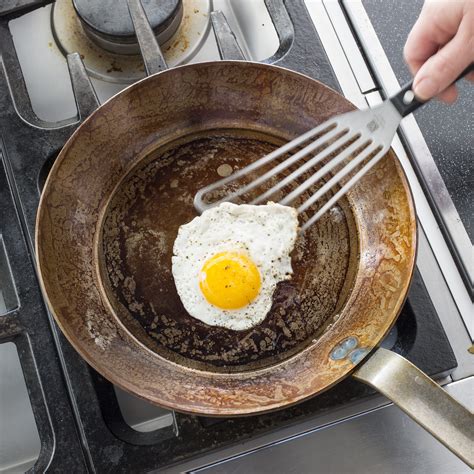Carbon Steel Cooking: Healthier, Tastier, Easier
Carbon steel cookware is experiencing a resurgence, and for good reason. This versatile, durable material offers a compelling combination of health benefits, superior cooking performance, and surprisingly easy maintenance. While cast iron might be the more familiar choice for seasoned cooks, carbon steel presents a compelling alternative, boasting lighter weight, faster heating, and impressive even heat distribution. This article delves into why carbon steel is becoming a favorite among health-conscious home chefs, exploring its advantages and dispelling common misconceptions.
Is Carbon Steel Cookware Healthier Than Other Options?
This is a question frequently asked by those exploring healthier cooking options. The short answer is: potentially, yes. Carbon steel, unlike non-stick coatings like Teflon, contains no potentially harmful chemicals that leach into your food at high temperatures. Properly seasoned carbon steel creates a natural non-stick surface, reducing the need for excessive oil or butter, contributing to lower-calorie meals. The even heating also ensures food cooks evenly, minimizing the formation of harmful compounds that can occur with uneven heat distribution.
What are the health benefits of cooking with carbon steel?
- Reduced Chemical Exposure: Unlike some non-stick pans, carbon steel pans are free from PTFE (polytetrafluoroethylene) and PFOA (perfluorooctanoic acid), which are potentially harmful chemicals linked to health concerns.
- Lower Fat Cooking: The naturally non-stick surface allows for cooking with less oil, leading to healthier meals with reduced fat intake.
- Even Cooking: Even heat distribution ensures food cooks evenly, preventing the formation of harmful acrylamide, a compound linked to high temperatures.
- Nutrient Retention: Even cooking helps retain more nutrients in your food.
Is Carbon Steel Cookware Easier to Use Than Other Materials?
While there's a learning curve with any new type of cookware, carbon steel is surprisingly easy to use once you understand its properties. Its lightweight nature compared to cast iron makes it easier to handle and maneuver. The rapid heating allows for quick searing and fast cooking times.
How easy is it to clean carbon steel cookware?
Cleaning carbon steel is straightforward. While a thorough scrubbing may be needed after particularly sticky meals, hot, soapy water usually suffices. Avoid harsh abrasives that could damage the seasoning.
Does Carbon Steel Make Food Taste Better?
Many cooks believe that carbon steel imparts a unique flavor to food, enhancing the taste and creating a delightful sear on meats and vegetables. The even heat distribution promotes even browning and caramelization, resulting in a richer, more complex flavor profile.
Why does food taste better in carbon steel?
- Even Browning: Even heat distribution leads to excellent browning and caramelization, creating a delicious crust on meats and vegetables.
- Superior Sear: The rapid heating capabilities are ideal for achieving a perfect sear, locking in juices and enhancing flavor.
- Flavor Infused Seasoning: Over time, the seasoned surface of the pan develops a patina that can subtly infuse your food with flavor.
How to Season Carbon Steel Cookware?
Seasoning is crucial for creating that natural non-stick surface and protecting the pan from rust. The process involves applying a thin layer of oil and baking it in the oven, creating a polymerized layer that makes the pan naturally non-stick.
What's the best oil for seasoning carbon steel?
While various oils can be used, flaxseed oil, grapeseed oil, or refined coconut oil are popular choices because of their high smoke points.
What are the Differences Between Carbon Steel and Cast Iron?
While both are excellent choices for cooking, carbon steel and cast iron differ significantly in weight and heat responsiveness. Carbon steel is lighter, heats up faster, and cools down faster than cast iron. Cast iron retains heat for longer periods, making it ideal for certain cooking methods, while carbon steel's responsiveness allows for more precise temperature control.
Carbon Steel vs. Stainless Steel: Which is Better?
Carbon steel offers superior heat conductivity compared to stainless steel. This results in faster heating and more even cooking. Stainless steel tends to have hot spots, which can lead to uneven cooking and burning. However, stainless steel is more resistant to scratching.
Conclusion
Carbon steel cookware offers a winning combination of health benefits, exceptional cooking performance, and relatively easy maintenance. It's a versatile choice for home cooks looking to upgrade their kitchen arsenal. Its lighter weight, faster heating, and ability to achieve a superb sear makes it a strong contender for anyone seeking a healthier and more flavorful cooking experience. Give it a try—you might just find your new favorite pan!

